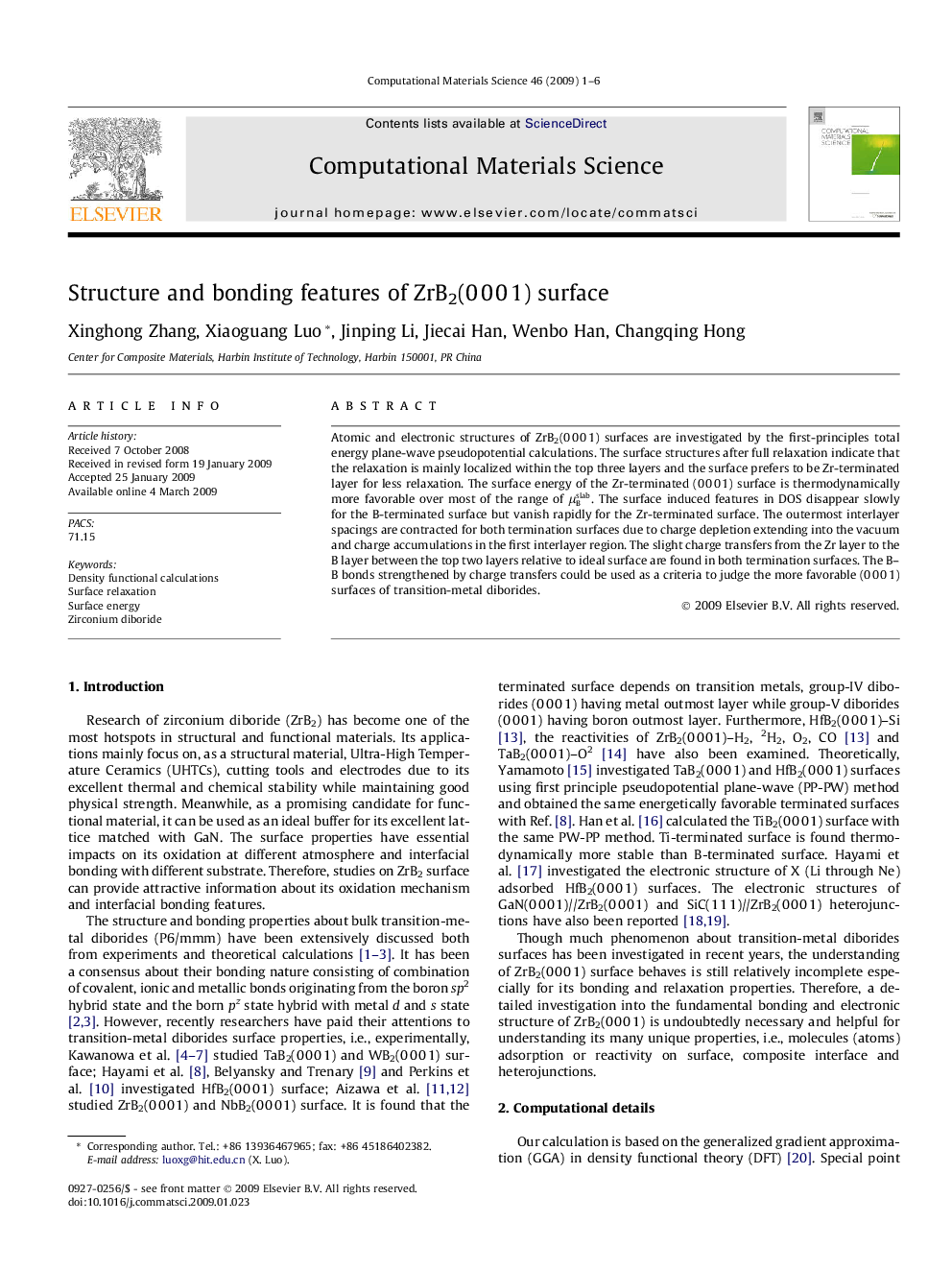| Article ID | Journal | Published Year | Pages | File Type |
|---|---|---|---|---|
| 1563492 | Computational Materials Science | 2009 | 6 Pages |
Atomic and electronic structures of ZrB2(0 0 0 1) surfaces are investigated by the first-principles total energy plane-wave pseudopotential calculations. The surface structures after full relaxation indicate that the relaxation is mainly localized within the top three layers and the surface prefers to be Zr-terminated layer for less relaxation. The surface energy of the Zr-terminated (0 0 0 1) surface is thermodynamically more favorable over most of the range of μBslab. The surface induced features in DOS disappear slowly for the B-terminated surface but vanish rapidly for the Zr-terminated surface. The outermost interlayer spacings are contracted for both termination surfaces due to charge depletion extending into the vacuum and charge accumulations in the first interlayer region. The slight charge transfers from the Zr layer to the B layer between the top two layers relative to ideal surface are found in both termination surfaces. The B–B bonds strengthened by charge transfers could be used as a criteria to judge the more favorable (0 0 0 1) surfaces of transition-metal diborides.
